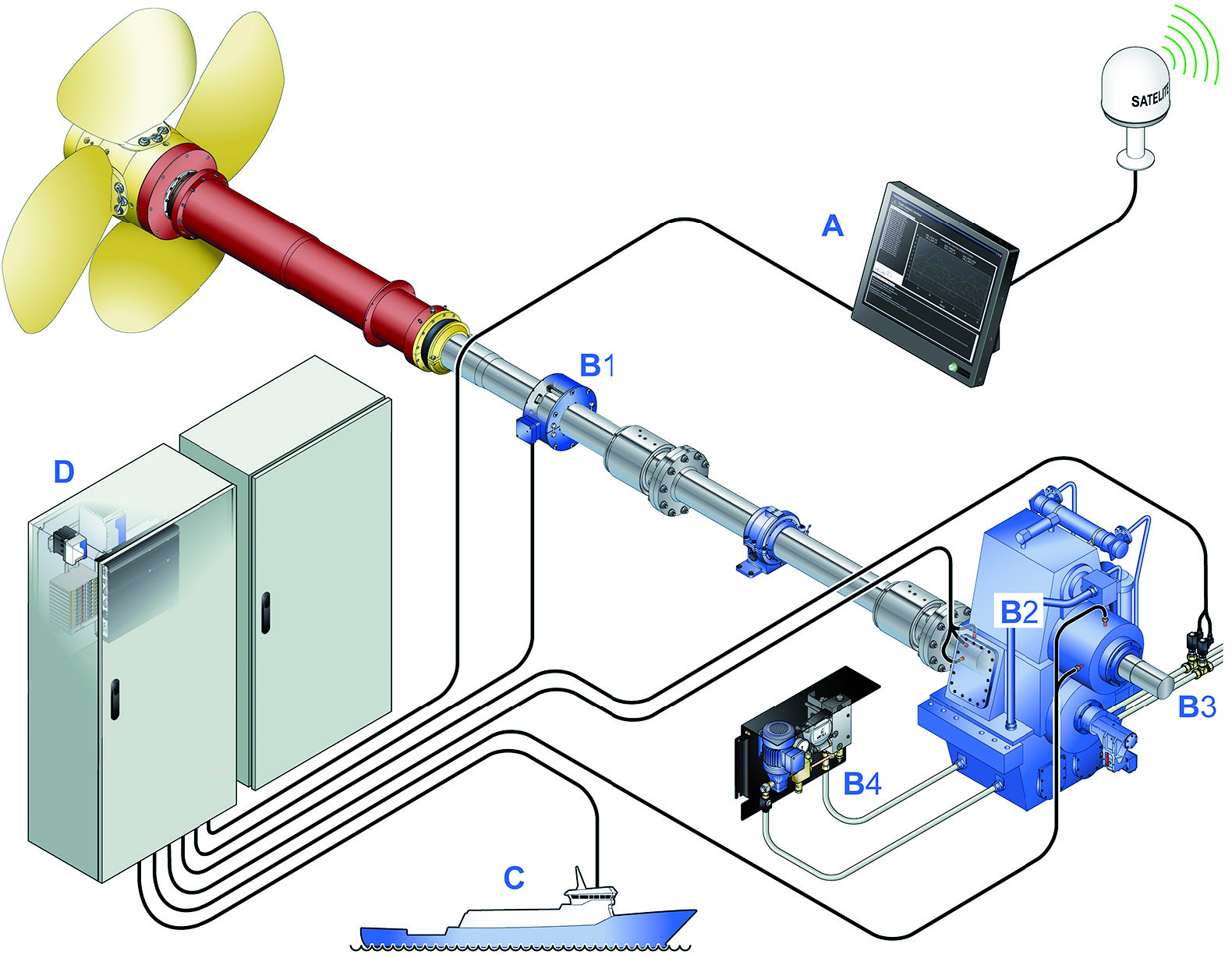

Propulsion Condition Monitoring Service
In August 2010, Wärtsilä introduced its Propulsion Condition Monitoring Service (PCMS) for all types of propulsion machinery. This service aims to provide the customer with information about the condition of his propulsion equipment.
To provide this service, a PCMS system consisting of the following items has to be installed onboard the vessel:
PCMS advisory monitor
One or more PCMS cabinets, each with the following as standard:
– 6 accelerometers (50kHz)
– 4 pressure (50Hz) transmitters
– 2 temperature transmitters
– oil monitoring unit
– torque (100Hz) measurement system.
The number of inputs can be changed depending on the specific requirements. Accelerometers are used to monitor the condition of mechanical parts, such as gears and bearings, but can also detect for example, blade damage. One PCMS system can process up to 16 accelerometers simultaneously. Lubrication and hydraulic oil is monitored by measuring temperature, the oil-water saturation, and any oil contamination.
The PCMS advisory monitor is the next evolutionary step in vessel automation. The interface gathers and shows information from all the PCMS cabinets on the vessel. It gives real-time and trend values, and advises the operator in case of irregularities. It has been developed to detect the operational states by real-time comparisons of parameters from multiple sources. For example, the vibration measurements are linked to the operational condition of the vessel. If an operational state causes severe vibration, the PCMS will advise how to rectify this unwanted situation. The advisory monitor sends a data package to the propulsion CBM (Condition Based Maintenance) centre on a daily basis. There the data is automatically processed, and in the event of irregularities, the propulsion specialist will take relevant action.
Once a month, the customer receives a PCMS report describing the condition of his equipment. To effectively analyse the data and to ensure that no important events have been overlooked, a large part of the data analysis is automated.
Further reading: In Detail issue no. 02/2010
